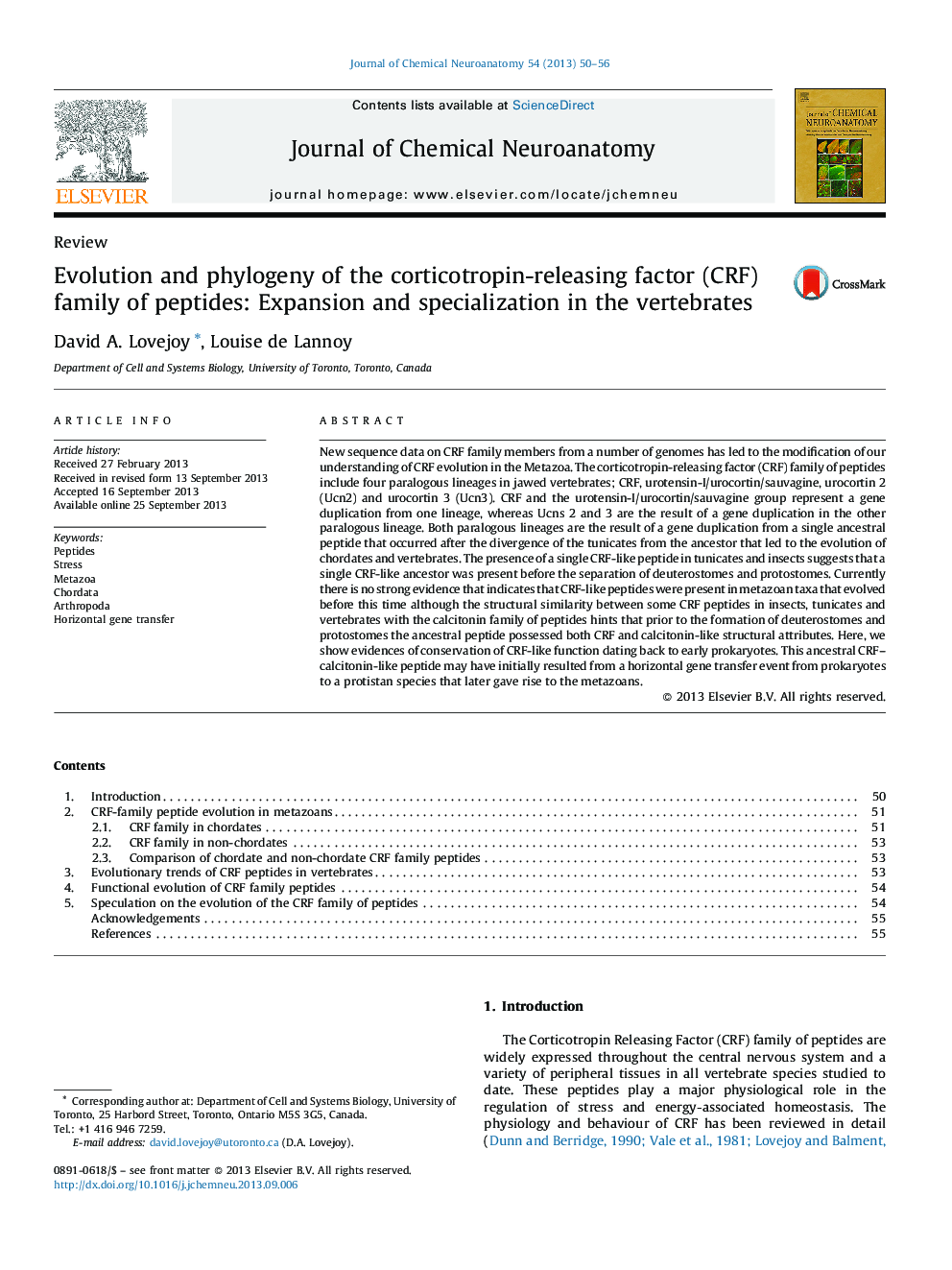| کد مقاله | کد نشریه | سال انتشار | مقاله انگلیسی | نسخه تمام متن |
|---|---|---|---|---|
| 1988868 | 1540461 | 2013 | 7 صفحه PDF | دانلود رایگان |

• The CRF family in vertebrates consists four paralogous lineages: CRF; urotensin-I/urocortin/savagine; urocortin 2 and urocortin 3.
• In invertebrates, the CRF family is represented by the insect diuretic peptides (DH).
• The CRF family is ancestrally involved in ion and energy regulation.
• A lateral gene transfer event from prokaryotes may have given rise to CRF-related peptides.
New sequence data on CRF family members from a number of genomes has led to the modification of our understanding of CRF evolution in the Metazoa. The corticotropin-releasing factor (CRF) family of peptides include four paralogous lineages in jawed vertebrates; CRF, urotensin-I/urocortin/sauvagine, urocortin 2 (Ucn2) and urocortin 3 (Ucn3). CRF and the urotensin-I/urocortin/sauvagine group represent a gene duplication from one lineage, whereas Ucns 2 and 3 are the result of a gene duplication in the other paralogous lineage. Both paralogous lineages are the result of a gene duplication from a single ancestral peptide that occurred after the divergence of the tunicates from the ancestor that led to the evolution of chordates and vertebrates. The presence of a single CRF-like peptide in tunicates and insects suggests that a single CRF-like ancestor was present before the separation of deuterostomes and protostomes. Currently there is no strong evidence that indicates that CRF-like peptides were present in metazoan taxa that evolved before this time although the structural similarity between some CRF peptides in insects, tunicates and vertebrates with the calcitonin family of peptides hints that prior to the formation of deuterostomes and protostomes the ancestral peptide possessed both CRF and calcitonin-like structural attributes. Here, we show evidences of conservation of CRF-like function dating back to early prokaryotes. This ancestral CRF–calcitonin-like peptide may have initially resulted from a horizontal gene transfer event from prokaryotes to a protistan species that later gave rise to the metazoans.
Journal: Journal of Chemical Neuroanatomy - Volume 54, December 2013, Pages 50–56